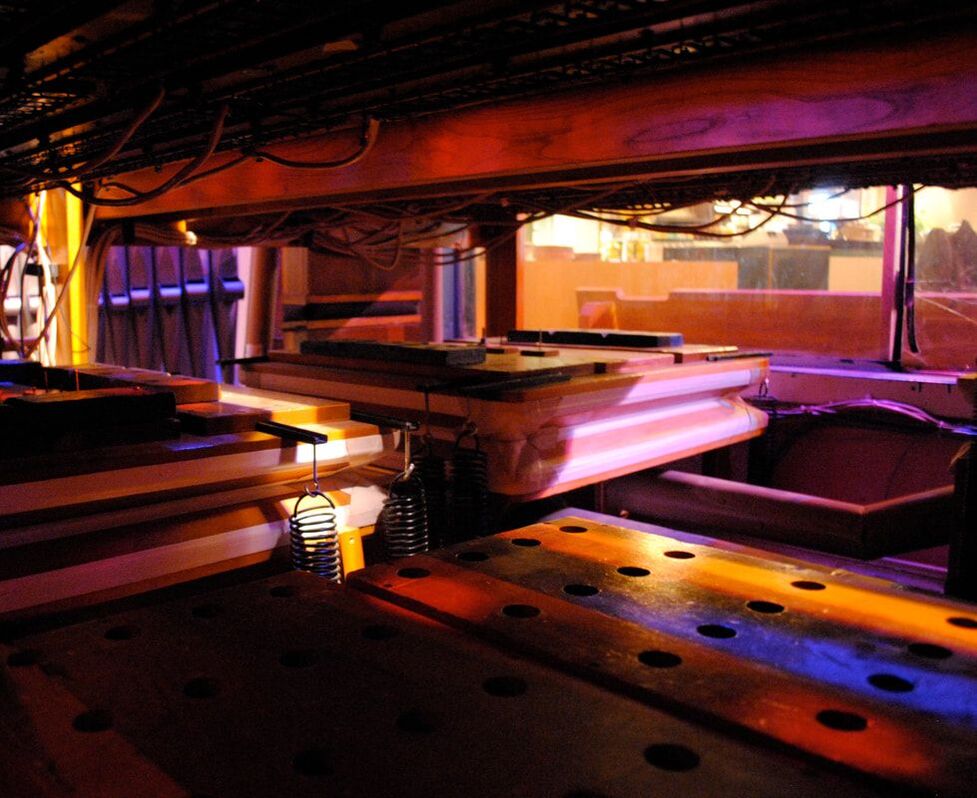The Wind System:
All of the air which feeds the organ is produced by a 10 horsepower blower made by the Spencer Turbine Company of Hartford, CT. The pressurized air is transmitted through large ducts to various regulators which can be seen near the floor of the organ chambers. These regulate the static pressure from the blower down to pressures which the pipes require to speak. The larger regulators feed several sets of pipes, the smaller ones generally only feed one set of pipes.
From there, pressure is fed into the wind-chests on which the pipes sit. Under each and every pipe, there is a small electro-magnet and a series of valves which are activated when the organist plays that note and stop combination.
The other crucial components of a theater organ wind system are the tremulants. These devices exhaust air at regular intervals which fluctuate the air pressure to the pipes, creating vibrato as in a human singing voice. This fluctuation causes the regulators to “bounce” as they attempt to steady the wind pressure at the pipes.
The picture below was taken under the wind-chests in our main chamber. The objects with the springs are two of the regulators and the wooden boxes in the foreground with the holes in the tops are tremulants.
From there, pressure is fed into the wind-chests on which the pipes sit. Under each and every pipe, there is a small electro-magnet and a series of valves which are activated when the organist plays that note and stop combination.
The other crucial components of a theater organ wind system are the tremulants. These devices exhaust air at regular intervals which fluctuate the air pressure to the pipes, creating vibrato as in a human singing voice. This fluctuation causes the regulators to “bounce” as they attempt to steady the wind pressure at the pipes.
The picture below was taken under the wind-chests in our main chamber. The objects with the springs are two of the regulators and the wooden boxes in the foreground with the holes in the tops are tremulants.

